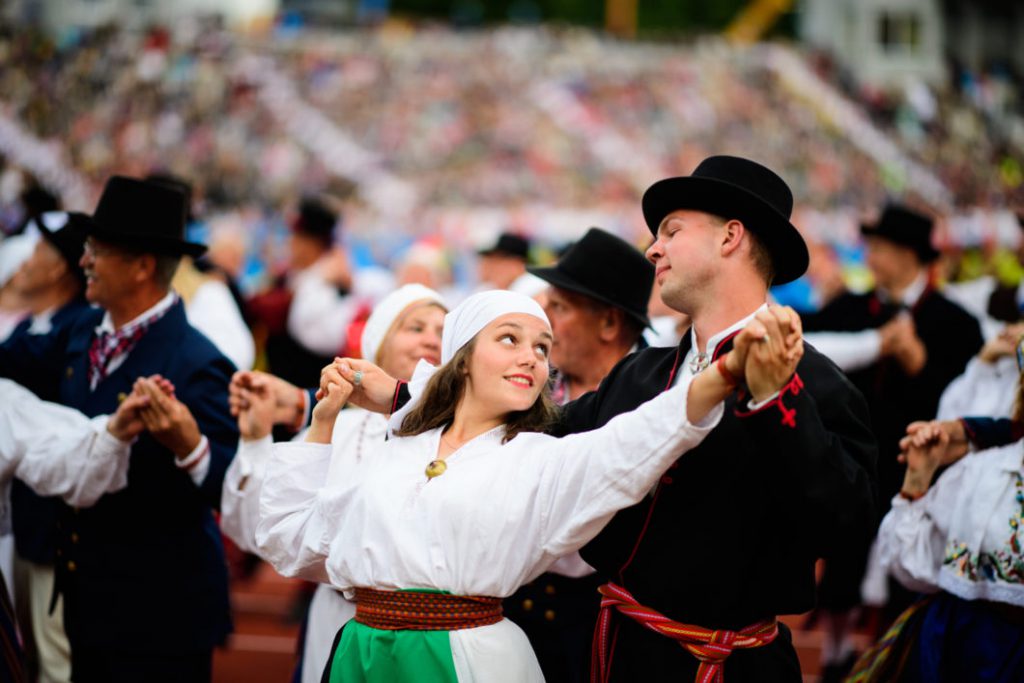Almost five per cent of the Estonian population sing in choirs or dance in folk dance groups, the statistics show.
According to Statistics Estonia, the country’s statistics agency, as of 2019 there were 82,500 people who were somehow engaged with folk culture in Estonia – 59,000 of them sang in choirs (37,300) or danced in folk dance groups (21,700). In addition, people are involved in amateur theatre, handicrafts and folk bands.
Compared with ten years ago, the number of people engaged in Estonian folk culture has grown by 6,000 people, the agency said. The highest number of folk lovers per capita are in Võru County, and the least in Ida-Viru County and in Tallinn, the capital.
Over half (59%) of the folk enthusiasts are children or youngsters, especially in choirs, amateur theatre and folk dancing groups; and an overwhelming majority (70%) of the folk lovers are females. But it’s very much a language-based affair – in 2019, over 94% of the folk buffs participated in Estonian groups. However, there were also over 1,700 choir singers and over 450 folk dancers with non-Estonian background.
Estonia has a very strong choral tradition. The Estonian Song Celebration brings in every five years together a huge choir of 30,000 singers for a weekend in July. Usually more than 100,000 spectators enjoy the concerts and sing along to the most popular songs. Estonians have also one of the biggest collections of folk songs in the world, with written records of about 133,000 of them.
Cover: Estonian Dance Celebration in 2019. Photo by Sven Zacek.

